Recyclable packaging materials include glass bottles and jars, wood, aluminum cans and foil, steel food tins, paperboard cartons, corrugated cardboard, and plastics labeled #1 (PET) or #2 (HDPE).
Facilities reprocess these materials into new packaging repeatedly when consumers rinse items, remove labels, and place them in correct recycling streams.
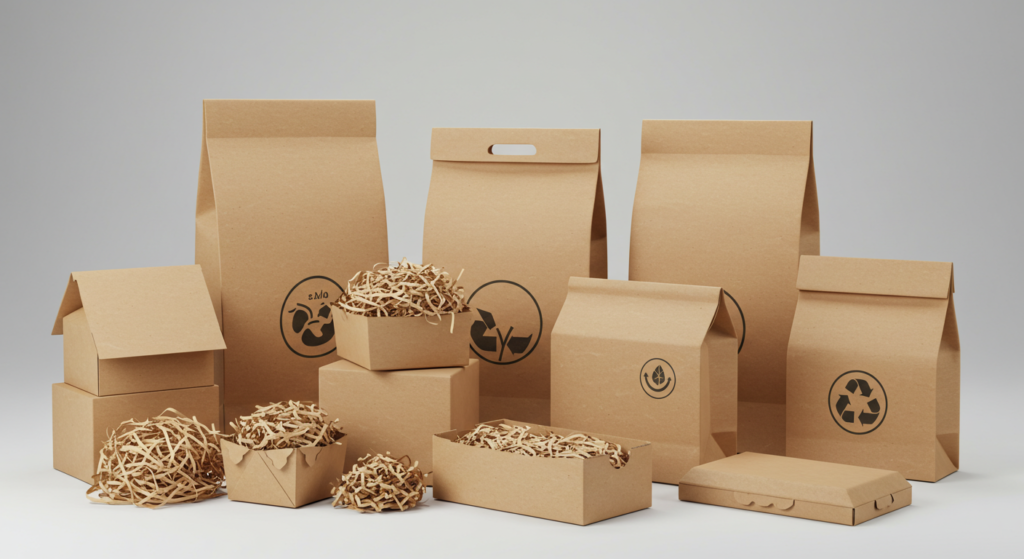
Paper
Paper is one of the most common packaging materials used for shipping boxes, bags, and wrapping. This material comes from wood pulp and is highly recyclable.
Paper packaging protects products during shipping and storage. You’ll find it in corrugated boxes, paper bags, wrapping paper, and padding materials. Most paper packaging can be recycled up to 7 times before the fibers become too short to use again.
To recycle paper packaging, remove any tape, labels, or plastic windows first. Flatten boxes to save space in your recycling bin. Keep paper dry since wet paper can’t be recycled. Place clean paper products in your curbside recycling bin or take them to a local recycling center.
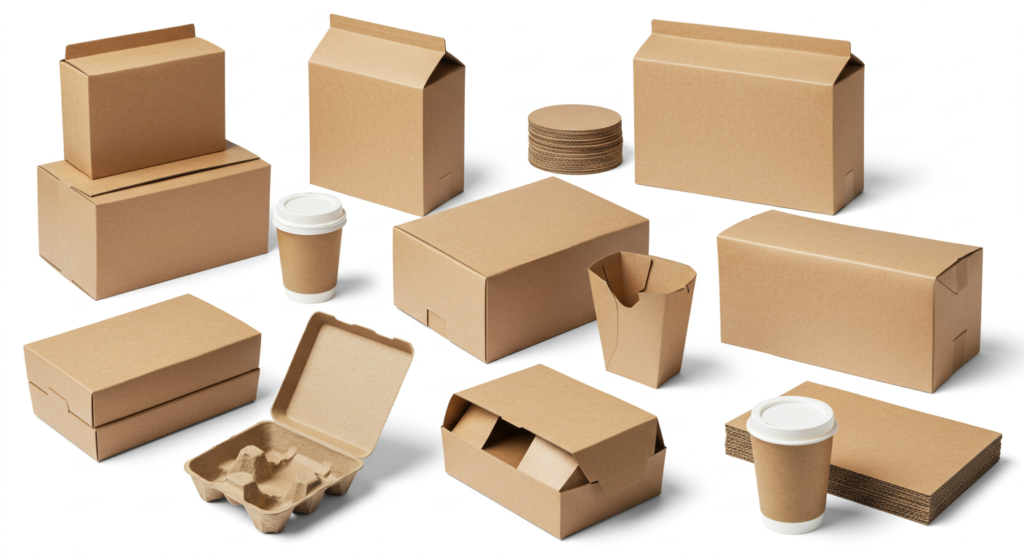
Paperboard
Paperboard is a thick, stiff paper material used for cereal boxes, shoe boxes, and product packaging. It’s lighter than corrugated cardboard but stronger than regular paper.
You’ll find paperboard in food packaging, cosmetic boxes, pharmaceutical packages, and retail display boxes. This material provides good protection while being lightweight and printable. Paperboard uses less material than plastic alternatives for many applications.
Recycling paperboard follows the same process as paper. Remove any plastic coatings or metal pieces. Flatten boxes and keep them dry. Most curbside programs accept paperboard with other paper products. Clean food residue off before recycling to prevent contamination.

Glass
Glass packaging includes bottles and jars for food, beverages, and cosmetics. Glass is 100% recyclable and can be recycled endlessly without losing quality or purity.
Glass containers protect products from air and moisture. They don’t absorb flavors or odors, making them ideal for food storage. Glass packaging works well for products that need to maintain freshness, like pickles, sauces, and beverages.
To recycle glass, rinse containers to remove food residue. Remove metal lids and recycle them separately. Sort glass by color if your program requires it – clear, brown, and green glass melt at different temperatures. Don’t include window glass, mirrors, or ceramics with bottle recycling.
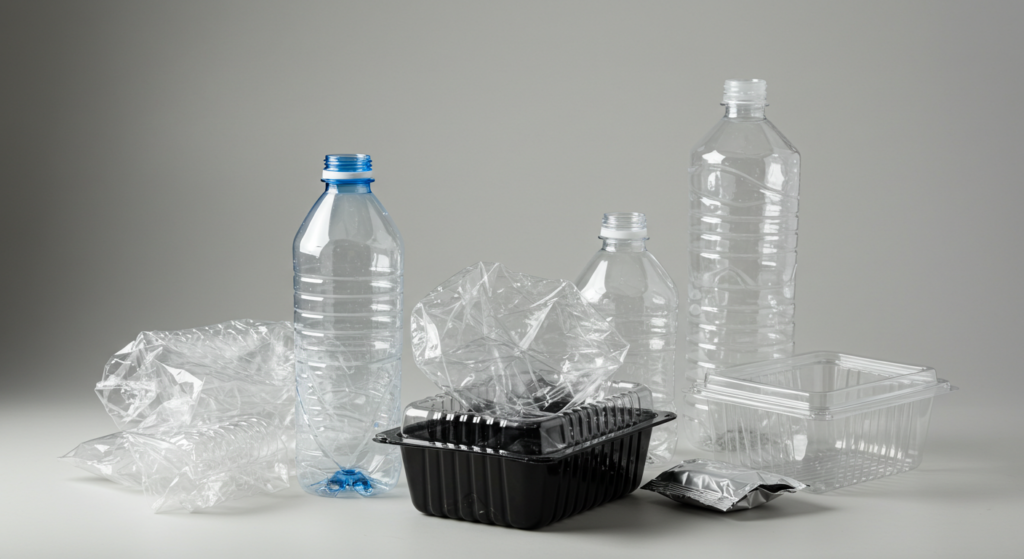
Plastic
Plastic packaging comes in 7 different types, identified by numbers 1-7 in the recycling symbol. Common types include PET bottles (water bottles), HDPE containers (milk jugs), and polypropylene (yogurt cups).
Plastic protects products from moisture and extends shelf life. It’s lightweight, which reduces shipping costs. Different plastic types serve different purposes – rigid plastics for containers and flexible plastics for bags and wraps.
Check the number on plastic packaging before recycling. Most programs accept plastics 1 and 2. Rinse containers and remove caps if required by your local program. Plastic bags often need separate recycling at grocery store drop-offs rather than curbside bins.
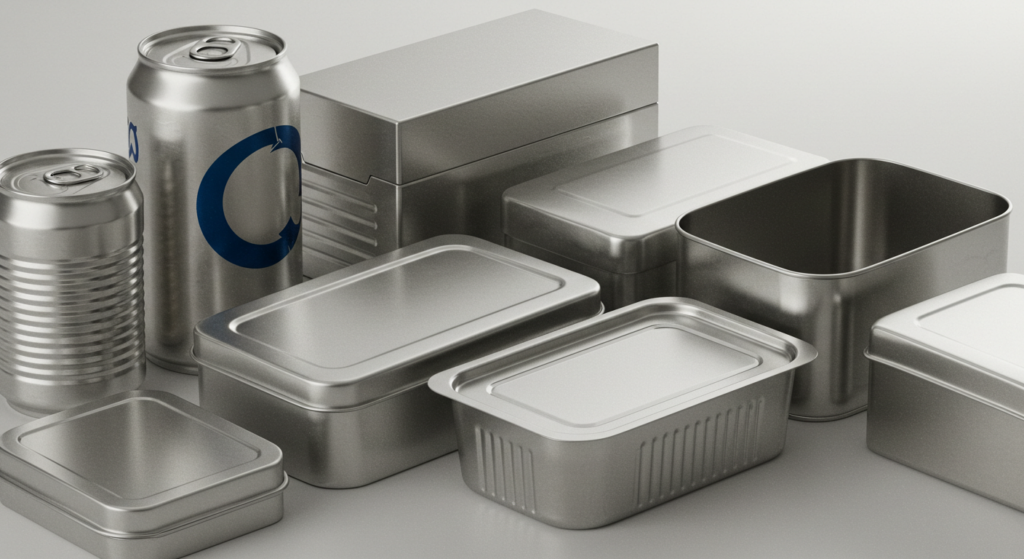
Metal
Metal packaging includes aluminum cans, steel food cans, and aerosol containers. Both aluminum and steel are highly recyclable materials that maintain their properties through multiple recycling cycles.
Aluminum cans are the most recycled beverage containers. They’re lightweight and protect contents from light and air. Steel cans preserve food for long periods without refrigeration. Metal packaging provides excellent barrier properties against contamination.
Rinse metal containers before recycling. Aluminum and steel can usually go in the same recycling bin. Empty aerosol cans completely before recycling – don’t puncture them. Remove paper labels if possible, though most recycling facilities can handle them.
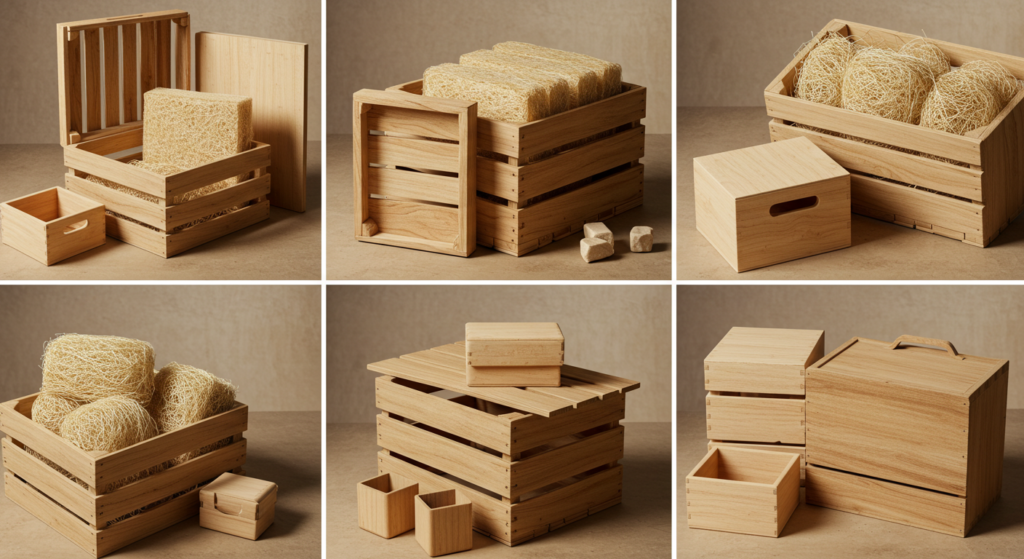
Wood
Wood packaging includes pallets, crates, and specialty boxes for wine or produce. While less common for consumer products, wood packaging plays a major role in shipping and logistics.
Wood provides sturdy protection for heavy or fragile items. It’s renewable and biodegradable. Many wood packaging items like pallets get reused multiple times before recycling. Wood packaging often costs less than plastic alternatives for large items.
Wood packaging recycling varies by location. Many facilities grind wood into mulch or biomass fuel. Clean wood without nails or treatment can be composted. Contact local waste management about wood recycling options. Businesses can often return pallets to suppliers for reuse.

